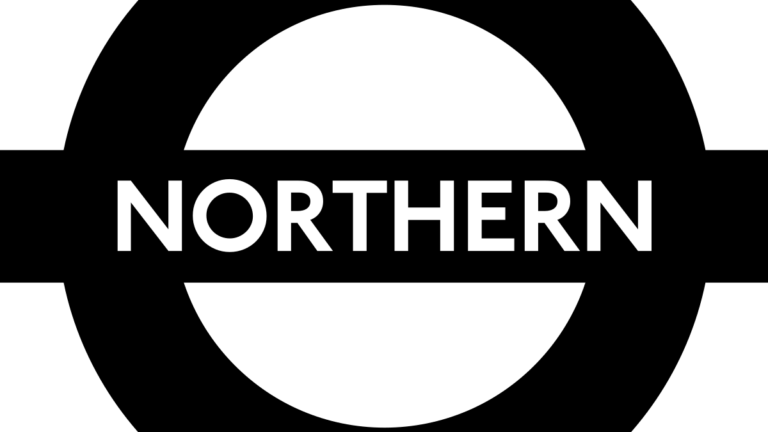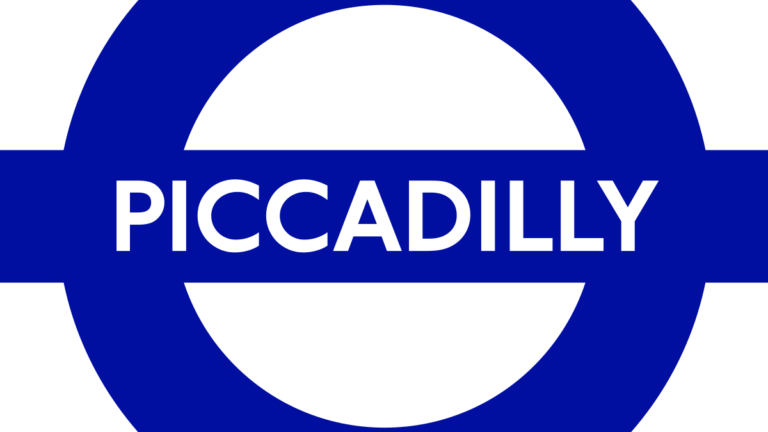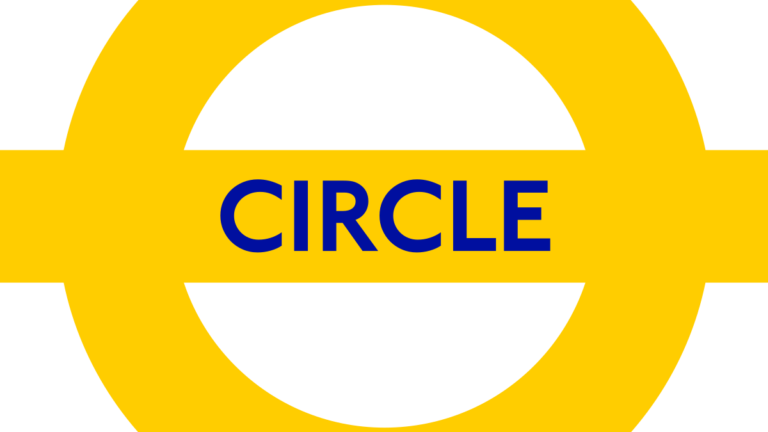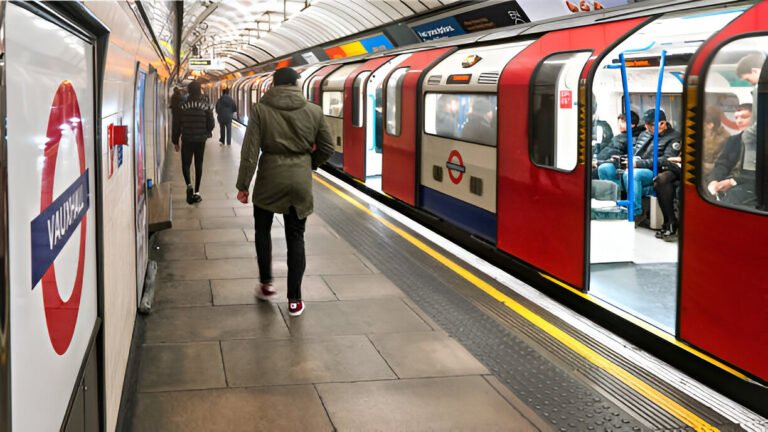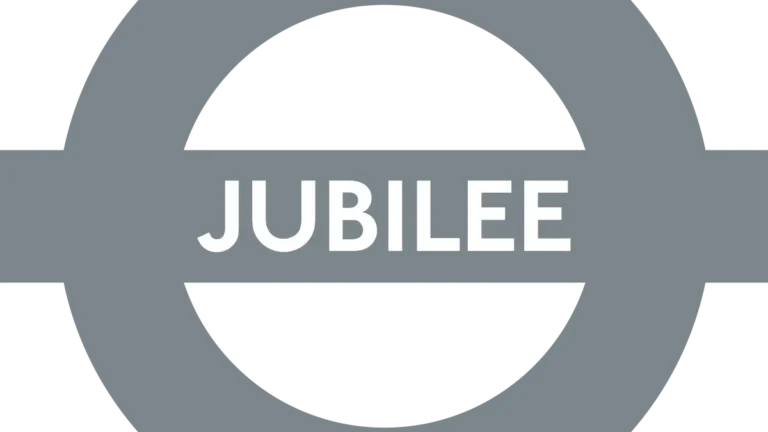1. Introduction To Central line map
The Central line map is one of the most vital and busiest lines on the London Underground, running east-west across the city. Known for its distinctive red color on the Tube map, it serves key areas like the City of London, the West End, and suburban districts. It plays a crucial role in daily commutes and tourism, connecting major business hubs, shopping centers, and cultural landmarks.
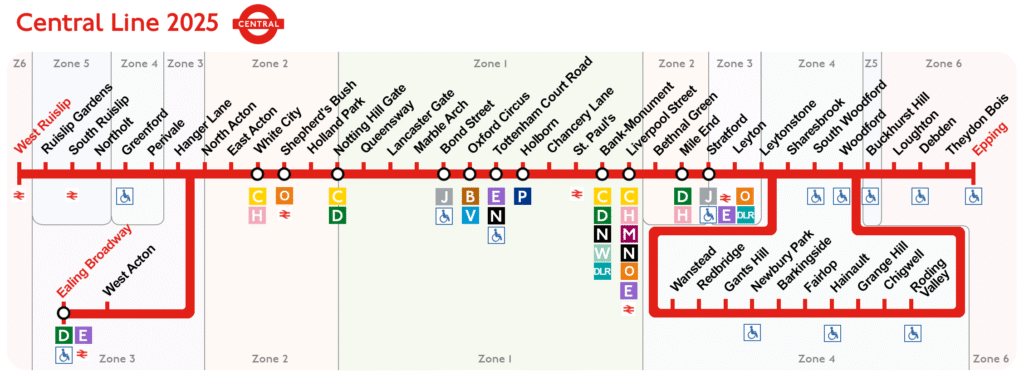
Route 1: Ealing Broadway – Epping
Route 2: Ealing Broadway – Hainault
Route 3: West Ruislip- Epping
Route 4: West Ruislip – Hainault via Woodford
Route 5: West Ruislip – Hainault via Newbury Park
2. History of the Central Line
- Origins: Opened in 1900 as the Central London Railway, it was one of the first deep-level Tube lines.
- Early Expansion: Extended to Ealing Broadway (1920) and Liverpool Street (1912).
- Post-War Developments: Further extensions to West Ruislip (1948) and Epping (1949).
- Modernization: New trains introduced in the 1990s (1992 Stock), with upgrades to signaling and station accessibility.
3. Route and Stations
Route Overview
- Length: 74 km (46 miles) – longest line on the London Underground.
- Direction: East-west, spanning from Epping (northeast) to West Ruislip/Ealing Broadway (west).
- Sections:
- Deep-level tunnels in central London (e.g., Bank to Notting Hill Gate).
- Subsurface/overground in outer zones (e.g., Stratford to Epping).
Key Terminals & Branches Central line map
| Terminus | Direction | Notes |
| Epping | Northeast | Ends in Zone 6; no Sunday service to Ongar (discontinued in 1994). |
| West Ruislip | West | Zone 6; connects to National Rail services. |
| Ealing Broadway | West (branch) | Zone 3; interchange with Elizabeth line and GWR trains. |
Major Interchange Stations Central line map
| Station | Zone | Connections | Notable Features |
| Bank/Monument | 1 | Northern, DLR, Waterloo & City | Complex interchange; walkways to Cannon Street. |
| Oxford Circus | 1 | Bakerloo, Victoria | Busiest interchange; access to shopping districts. |
| Liverpool Street | 1 | Elizabeth line, Overground, National Rail | Gateway to Canary Wharf (via Elizabeth line). |
| Stratford | 2/3 | Jubilee, Overground, DLR, Elizabeth line | Olympic Park hub; Westfield shopping centre. |
| Notting Hill Gate | 2 | District, Circle | Near Portobello Road Market. |
Notable Stations & Landmarks Central line map
- Holborn (Zone 1): Interchange with Piccadilly line; close to British Museum.
- Marble Arch (Zone 1): Steps from Hyde Park and Oxford Street.
- Bethnal Green (Zone 2): Near Brick Lane and Columbia Road Market.
- Leytonstone (Zone 3/4): Gateway to Wanstead Flats (Epping Forest).
Travel Zones & Accessibility Central line map
- Zones Covered: 1–6 (central London to outer suburbs).
- Accessibility: Only 25/49 stations have step-free access (e.g., Stratford, Liverpool Street). Check TfL’s accessibility map for details.
Fun Facts Central line map
- Shortest Distance Between Stations: Liverpool Street to Bank (just 300m).
- Longest Gap: Between Debden and Theydon Bois (2.6 km).
- Ghost Station: British Museum (closed in 1933; trains still pass it).
Interactive Map Suggestion Central line map
Explore the official Central Line map or Google Maps’ transit layer for a visual guide.
4. Central Line Schedule: Operating Hours, Frequency & Travel Tips
The Central Line operates one of the most frequent services on the London Underground, but schedules vary depending on the day, time, and section of the line. Below is a detailed breakdown of its schedule, peak/off-peak frequencies, and key travel advice.
Operating Hours
- Monday to Saturday:
- First trains: Around 5:00 AM (varies by station)
- Last trains: Around 12:30 AM (midnight)
- Sunday:
- First trains: Around 6:00 AM (later start due to engineering works)
- Last trains: Around 11:30 PM (earlier than weekdays)
Note:
- Exact times depend on the station (e.g., trains from Epping start earlier than from West Ruislip).
- Night Tube? The Central Line does not currently run 24 hours on weekends (unlike the Victoria or Jubilee lines).
Train Frequency (How Often Do Trains Come?) central line stops
The Central Line is one of the busiest on the Tube, with trains running every 2-3 minutes at peak times.
| Time Period | Frequency (Trains Per Hour) | Waiting Time |
| Peak Hours (7–9 AM & 5–7 PM) | 30–34 trains/hour | 2–3 mins |
| Daytime Off-Peak (9:30 AM–4 PM) | 20–24 trains/hour | 3–5 mins |
| Evenings (after 7 PM) | 15–20 trains/hour | 4–6 mins |
| Weekends | 12–15 trains/hour | 5–8 mins |
Key Notes:
- Busiest Sections: Between Liverpool Street and Bank, frequency is highest.
- Branch Lines: Trains to West Ruislip and Ealing Broadway run less frequently than the main route.
First & Last Trains (Key Stations) central line tube map
Here are the approximate first and last train times from major stations: central line london map
| Station | First Train (Weekdays) | Last Train (Weekdays) | First Train (Sunday) | Last Train (Sunday) |
| Epping | 5:10 AM | 12:20 AM | 6:15 AM | 11:15 PM |
| Stratford | 5:00 AM | 12:30 AM | 6:00 AM | 11:30 PM |
| Liverpool Street | 5:00 AM | 12:30 AM | 6:00 AM | 11:30 PM |
| Oxford Circus | 5:10 AM | 12:30 AM | 6:10 AM | 11:30 PM |
| Ealing Broadway | 5:15 AM | 12:15 AM | 6:15 AM | 11:15 PM |
| West Ruislip | 5:20 AM | 12:10 AM | 6:20 AM | 11:10 PM |
Always check TfL’s official journey planner for real-time updates! london underground central line map
Engineering Works & Delays
- Weekend Closures: Some sections (often between White City and Ealing Broadway/West Ruislip) close for maintenance. Replacement buses run.
- Late-Night Services: After 10 PM, some trains terminate early (e.g., at Leytonstone instead of Epping).
Travel Tips
✔ Avoid Peak Hours (7–9:30 AM & 5–7 PM) if possible—trains are extremely crowded.
✔ Use Contactless/Oyster for cheapest fares (no paper tickets needed).
✔ Check for Strikes/Engineering Works—the Central Line is prone to disruptions.
✔ Stand Clear of Doors—this line has some of the fastest-closing doors on the Tube!
Final Thoughts
The Central Line is fast and frequent but can get very busy. Planning around peak times and checking for delays will make your journey smoother.
4. Key Features
- Color & Identity: Bright red on Tube maps.
- Deep-Level Tunnels: Mostly underground in central London, with suburban overground sections.
- Trains: Uses 1992 Stock trains, some of the oldest still in service (due for replacement).
- Frequency: Up to 34 trains per hour during peak times.
5. Notable Landmarks and Destinations
The Central line provides access to:
- Oxford Street (Europe’s busiest shopping street)
- St. Paul’s Cathedral (via St. Paul’s station)
- Theatreland (via Tottenham Court Road)
- Stratford (Westfield Shopping Centre & Queen Elizabeth Olympic Park)
- Epping Forest (a large green space at the eastern end)
6. Challenges and Interesting Facts
The Central Line is one of London Underground’s most iconic routes, but it also comes with unique quirks and challenges. Here’s a deeper dive into its fascinating (and sometimes frustrating) aspects.
Key Challenges
1. Overcrowding – One of London’s Busiest Lines
- Peak Hour Chaos: The Central Line handles over 260 million passengers annually, making it the second-busiest after the Northern Line.
- Worst Sections:
- Bank to Liverpool Street (tight curves slow trains, worsening congestion).
- Oxford Circus to Holborn (major tourist and commuter interchange).
- “Crush Loading”: Some trains exceed 130% capacity during rush hour.
2. The Hottest Tube Line
- Why So Hot?
- Deep tunnels (up to 49m below ground) trap heat.
- Lack of air conditioning (1992 Stock trains rely on ventilation).
- Braking friction generates extra warmth.
- Summer Temperatures: Can exceed 30°C (86°F)—hotter than the legal limit for cattle transport!
- TfL’s Fixes: Experimental groundwater cooling, but no AC until new trains arrive (~2030).
3. Sharpest Curve on the Underground
- Location: Between Bank and Liverpool Street.
- The “Caution: Curve” Sign: Warns drivers of the tightest bend on the Tube network.
- Why It Matters:
- Trains must slow to 20 km/h (usually 50+ km/h), causing delays.
- Wheel wear is higher here, requiring frequent maintenance.
4. Signal Failures & Delays
- Aging Infrastructure: Still uses 1940s-era signalling in some sections.
- Upgrades Coming: New CBTC signalling (like the Elizabeth Line’s) should improve reliability by 2030.
Interesting & Unusual Facts
1. Ghost Stations
The Central Line passes two disused stations:
- British Museum (closed in 1933): Between Tottenham Court Road and Holborn. Trains still slow down here.
- North Weald (on the Epping-Ongar branch, closed in 1994).
2. WWII Bomb Shelter
- Stretch Between Leytonstone and Gants Hill was used as an underground factory making aircraft parts during WWII.
3. Misaligned Platforms at Bank
- Due to space constraints, Central Line platforms at Bank are offset from the escalators, causing bottlenecks.
4. The “Epping Ongar” Heritage Line
- The Epping-to-Ongar branch closed in 1994 but now runs as a heritage railway with vintage Tube trains.
5. Fastest Accelerating Trains
- The 1992 Stock trains have faster acceleration than newer models, helping maintain frequency.
6. Nicknamed the “Teflon Tube”
- In the 1980s, slippery rails caused trains to overshoot platforms. TfL had to sand the tracks for grip!
Traveler Tips for Surviving the Central Line
✔ Avoid 8–9:30 AM & 5–7 PM if possible.
✔ Carry water in summer—it gets extremely hot.
✔ Stand back from the edge—trains take sharp turns at some stations.
✔ Check for weekend closures (common on the western branch).
7. Future Developments
The Central Line is set for major upgrades in the coming years—from new trains to potential extensions—aimed at improving capacity, comfort, and reliability. Here’s what’s planned (and what’s just a dream for now).
New Trains: Replacing the 1992 Stock
Why?
- The current 1992 Stock trains are over 30 years old—some of the oldest still in service.
- No air conditioning (only forced ventilation), making summers unbearable.
- Frequent breakdowns due to aging components.
What’s Coming?
- New “Deep Tube” trains (similar to those on the Piccadilly Line) are expected by 2030.
- Key Improvements:
- Air conditioning (finally!).
- Better accessibility (wider doors, more space for wheelchairs).
- Improved energy efficiency (regenerative braking).
- Possible delays? Funding issues could push this back further.
Signaling Upgrades: Boosting Reliability & Frequency
Current Problems:
- Still uses 1940s-era signaling in parts, leading to:
- Bottlenecks (especially between Bank and Liverpool Street).
- Infrequent service on outer branches (e.g., Ealing Broadway).
New CBTC Signaling (Communications-Based Train Control)
- Expected completion: Late 2030s (after Piccadilly & Bakerloo upgrades).
- Benefits:
- More trains per hour (up to 36tph vs. current 34tph peak).
- Fewer delays from signal failures.
- Automated driving (like the Elizabeth Line).
Potential Extensions: Will the Central Line Grow?
1. Epping to Harlow (Essex) – Most Likely
- Why? Harlow’s population is growing, and it lacks direct Tube access.
- Proposal: Extend 6 miles from Epping to Harlow town centre.
- Challenges:
- Cost (£1.5–2 billion estimated).
- Opposition from Epping Forest conservationists.
- Likelihood? Medium – TfL is studying feasibility, but no funding yet.
2. West Ruislip to Uxbridge – Unlikely
- Why? Would connect to the Metropolitan/Piccadilly lines.
- Problem: Low demand—already well-served by other routes.
3. Restoring the Epping-Ongar Branch – Heritage Only
- The old Ongar branch closed in 1994, but a heritage railway now runs vintage trains.
- No plans for TfL to reopen it.
Long-Term Dreams (But Don’t Hold Your Breath)
- “Crossrail 2” Relief Line – Would reduce crowding but is stalled indefinitely.
- Platform Screen Doors – Possible at Bank and Oxford Circus, but expensive.
Timeline Summary
| Upgrade | Expected Completion | Status |
| New Trains | ~2030 | In planning |
| CBTC Signaling | Late 2030s | Early stages |
| Epping to Harlow | 2040s? | Feasibility study |
8. Conclusion
The Central line is a backbone of London’s transport system, connecting key areas with high-frequency service. Despite its challenges (like crowding and heat), it remains indispensable for commuters and tourists alike.
Travel Tip: Avoid peak hours (8-9:30 AM & 5-7 PM) if possible, and use contactless payment for the best fares!

